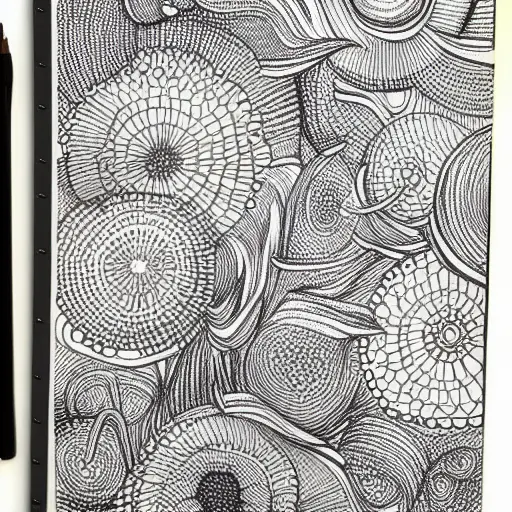A good notebook organization idea is to create an index. The index is usually the first page of the notebook and lists the contents. It should also include page numbers. Another great notebook organization idea is to use color. Color adds another layer of information and gives you an excuse to use your favorite colored inks or pens.
Organize your notebook with dividers
Dividers are a great way to organize your notebook. It is easy for a single notebook to become full of unrelated ideas and random notes. Without dividers, this can become an organizational nightmare. You can buy notebook dividers or make your own for a very low cost.
Dividers are protruding sections of paper. You can stamp them with labels or leave them blank. They make it easier to flip between pages, and they also look more professional. If you have multiple projects, this system will come in handy. You can place sticky notes on them and use them to keep track of projects and weekly goals.
Another way to organize your notebook is to place it in a binder. This makes it easy to find pages, and it keeps everything in one place. This way, when you need to find an item, you can go right to the page you’re looking for. You can label each page so you can go to the right one without wasting time searching through your notebook.
Dividers help you to keep your notebook well organized. They also help you to stay organized and avoid forgetting important papers and supplies. It is also important to note that dividers aren’t necessary for everyone, so you may want to try different methods if you’re unsure of which method will be best for you. It will take some time to get used to, but it is possible to keep your notebook organized if you use the right methods.
Use a daily or weekly calendar
If you’re a visual person and like keeping a list of tasks, then a daily or weekly calendar can help you stay organized. These calendars come with different sizes of sections, so you can use them to create a visual list. Some planners also have a space for writing down to-do lists and other important dates. You can also color-code your calendar so you can see your tasks at a glance.
Moleskine planners are a popular option for those who prefer a minimal format. They are easy to use and come in three sizes. The pages are divided into day and week, and include lines to write down notes. They also feature a monthly calendar. They combine the benefits of organization with freedom.
While daily planners are great for keeping track of daily tasks, a weekly planner allows you to plan for the upcoming week. This planner allows you to see the entire week at a glance, and allows you to prioritize tasks and activities. It also helps you create a balanced schedule and maintain a sense of peace.
If you use a daily or weekly calendar, you can set up your notebook in a way that will be most convenient for you. For example, you can have a page for every day of the week, and another page for weekend days. You can also use note cards or pages to write down recurring tasks.
Use bookmark ribbons or dividers
Using bookmark ribbons or dividers for notebooks can help you organize your books and notes in a more organized manner. You can create custom bookmarks using different materials to suit your needs and preferences. For example, you can create index tabs with washi tape, small sticky notes, or even post-it durable tabs. Alternatively, you can use bullet journal page markers. Moreover, you can easily make an origami book corner that you can use to bookmark important pages of your journal.
You can also create sections in your notebooks using bookmark ribbons or dividers to save time flipping through pages. Besides that, it is also helpful to keep multiple notebooks for different purposes. For example, you can have one notebook for meeting preparation, another for minute-taking, and a third for brainstorming processes.
Use a stick-on pocket
You can use a stick-on pocket on your notebook to organize notes and other small items. These pockets come in various sizes and can be placed on any surface of your notebook. They are convenient for storing post-it notes, receipts, and other items that you frequently use.
You can also use dividers and bookmark ribbons to section off notebooks. This will help you to quickly find the pages you need without fumbling through your journal. If you use more than one notebook for different purposes, consider labeling the spines and using different colors to differentiate them. Organizing notes can be useful for your work life and can help you stay focused on the tasks at hand.
Use an index page
The most basic index page will have two columns: one for the content of the page, and one for the page number. However, you can vary the format of your index page to create more complex layouts. In either case, the columns should be labeled. You can also add a header, which can be hand lettering or a sticker.
Creating an index page is one way to get your notebook organized. You can write the name of your notebook on the page or create a list of the contents. This will give you a convenient reference. Then, you can add page numbers to your index page to make it easier to find your pages.
Making an index is easier than you may think. The idea is to list the words or phrases found in the content. In the event that you can’t find a particular item in the index, simply add a new place for it. This way, you will never need to search through countless pages to find what you’re looking for again.
Creating an index page for bullet journal notebooks is a great way to keep everything organized. Bullet journal notebooks can contain anything from notes to sketches. And, because bullet journals are continuously updated, the index page provides a quick reference for any individual pages. But it’s not just bullet journals that need an index page. You can also add an index page manually to any notebook.
While using index pages can be difficult, they’re worth the effort. An index page allows you to carry the information from one notebook to another. It can also help you keep track of your notes at work.












